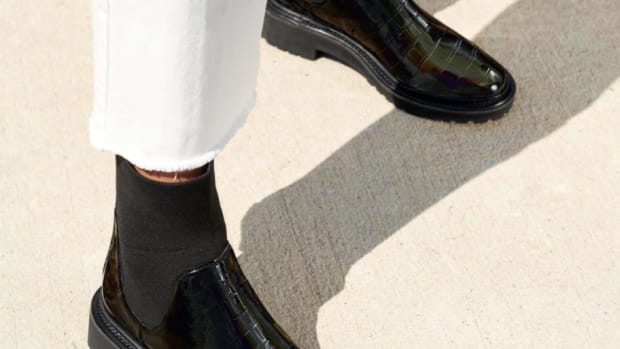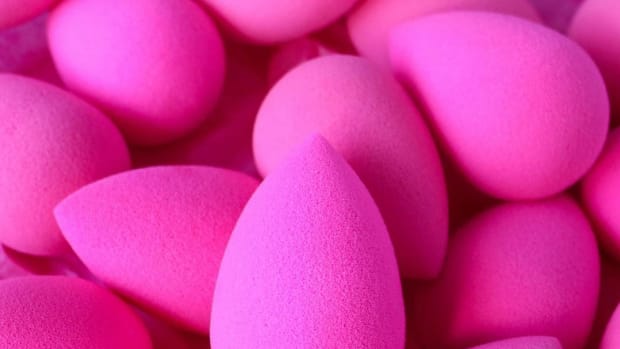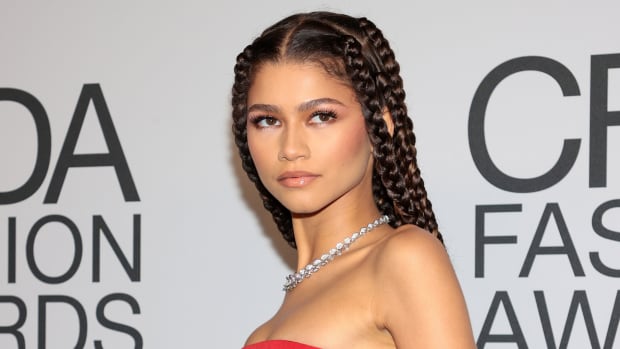In this series, we will take a look at the historical evolution of how iconic beauty products came into existence and grew so popular that they became cultural touchstones in their
own right.
Look into any makeup bag, and you're almost guaranteed to find a candy-colored, egg-shaped makeup sponge. Beautyblenders (and their countless knockoffs) are so ubiquitous, it's easy to forget what "blender" — came into our lives in 2003. "I was like, 'Somebody needs to modernize these tools,'" says the brand's founder, makeup artist Rea Ann Silva. The traditional (and pervasive, at that time) makeup sponge had two key attributes: inexpensive and disposable. "It was not ever really designed to put makeup on your face and make it look perfect, and make it look natural," recalls Silva. So back in the early aughts, she cut some corners — literally — while working on the set of the TV show Girlfriends, and an iconic, game-changing beauty tool was born.
But let's rewind a bit, shall we? Funnily enough, Silva didn't even start out in the beauty world. A Los Angeles native, she was a fashion student at the Fashion Institute of Design and Merchandising (FIDM), but needed a part-time job to support herself. Enter: makeup. "I ended up faking it 'til I was making it as a makeup artist on a retail floor at a department store for Chanel," she says.
But this was Hollywood, after all, and soon she advanced from the Chanel counter to set life. "I feel very fortunate that all of this took place during the MTV revolution," says Silva. She took advantage of every opportunity that came her way, doing makeup for Tupac and Dr. Dre's "California Love" and other music videos. The non-union work helped build her portfolio, but ultimately didn't provide the stability she needed as a single, working mom.
TV, on the other hand, was much more reliable. Silva became sought after thanks to a particular skill: airbrushing, which had transitioned from being used for special effects to beauty makeup. She landed a job on the sitcom Girlfriends, which broke barriers in more ways than one. "The show was going to be the first shot and broadcast in high definition," explains Silva. "The girls were four beautiful young African American women, and [creator] Mara [Akil Brock] and the producers on the show just really wanted them to look natural, didn't want them to look overly made up."
But keeping the more natural-looking makeup consistent had its challenges. Scenes were shot out of sequence, and the airbrushing tool was too loud to use for touch-ups on set. "I needed to find a way to make the airbrush applications look consistent throughout the day without using an airbrush," says Silva. Eventually a lightbulb moment came courtesy of makeup artist Kelcey Fry, who shared in a class that she would wet her sponges when using modern makeup for close-ups. "I thought, That's my challenge with high definition, everything is like a close-up.' It was working well, except for the triangular wedges that we would use, those sharp edges would leave lines of demarcation as you thinned out the makeup." So Silva created a DIY solution: "I started cutting the sponges and buffing the edges, and ended up coming up with just a teardrop shape, and that was literally how Beautyblender was born."
Recommended Articles
Before Silva even thought about producing her creation for consumers, she was excited to share Beautyblender with her peers in the industry. "My first thought was that digital is the future, and high definition is not going away," she recalls. But she quickly realized the tool had broader appeal. "The blenders would sprout legs and just disappear at the end of every day, because the actors were giving them to their sister, their friend, their aunt, their mother..."
But actually getting the tool made for the masses proved to be, in Silva's words, "an act of sticktoitiveness," not only because she was still a working makeup artist, but also because the product itself was tricky to produce. "Nobody had ever thought about this tool, that's why it's the category creator," she explains. "And sponge material as soft as Beautyblender was never cut into edgeless, round shapes."
About three years after she cut up her first sponge, Beautyblender finally hit shelves, though the brand's first mass retailer wasn't what you might expect. She landed a write-up in Women’s Wear Daily, which caught the attention of a buyer at Victoria's Secret, who naturally loved the tool's bright pink color. (The partnership was short-lived, however, as VS soon brought their beauty business in-house.) But the biggest coup was getting into Sephora. "As a makeup artist, I'd just think 'Oh my God, what if? What if one day I walked by and I saw my product in this window?'" Of course, not only is Beautyblender now indeed at Sephora; the mega-retailer also exclusively sells the brand's color cosmetics.
Complexion products, Silva says, were a "no-brainer" when expanding the brand. "I came out with foundation because it's the perfect product to use with the Beautyblender. It's like the hot dog now has a hot dog bun," she says. And a wide range of shades was important to Silva, who is a member of the Latinx community and has made inclusivity part of her brand's ethos since the very beginning. "I was mixing lipsticks and eye shadows and all kinds of unconventional things into my foundation to create shades of complexion that just weren't available before, I don't know, four years ago," she says.
Today, there are more different sizes, colors and iterations of Beautyblender than ever. The invention is so iconic, it earned Silva a spot as one of eight women featured in the Smithsonian's National Museum of American History's "The Only One in the Room: Women Achievers in Business and the Cost of Success" exhibit. "[My publicist] was like, 'Oh yeah, we got this call from the Smithsonian.' I was like 'The Smithsonian?' I totally thought that they got the wrong person.” Every makeup bag in America would beg to differ.
Please note: Occasionally, we use affiliate links on our site. This in no way affects our editorial decision-making.
Never miss the latest fashion industry news. Sign up for the Fashionista daily newsletter.




